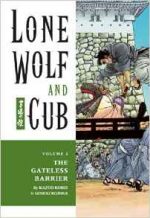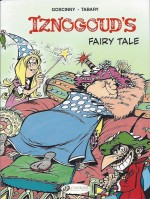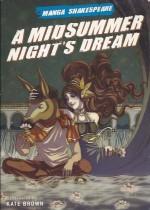
By Kazuo Koike & Goseki Kojima, translated by Dana Lewis (Dark Horse Manga)
ISBN: 978-1-56971-503-1
Best known in the West as Lone Wolf and Cub, the epic Samurai saga created by Kazuo Koike & Goseki Kojima is without doubt a global classic of comics literature.
An example of the popular “Chanbara†or “sword-fighting genre of books and cinema, Kozure Okami was serialised in Weekly Manga Action from September 1970 until April 1976 and was an immense hit. Those tales soon prompted a thematic companion series, Kubikiri Asa (Samurai Executioner) which ran from 1972 to 1976, but the major draw at home – and increasingly abroad – was always the nomadic wanderings of doomed noble ÅŒgami IttÅ and his solemn child.
Revered and influential, Kozure Okami was followed after years of supplication by fans and editors by sequel Shin Lone Wolf & Cub (illustrated by Hideki Mori) and even spawned – through Koike’s indirect participation – science fiction homage Lone Wolf 2100 by Mike Kennedy & Francisco Ruiz Velasco with.
The original saga has been successfully adapted to many other media, spawning six movies, four plays, two TV series, games and merchandise. The property is notoriously still in pre-production as a big Hollywood blockbuster.
The several thousand pages of enthralling, exotic, intoxicating narrative art produced by these legendary creators eventually filled 28 tankobon volumes, beguiling generations of readers in Japan and, inevitably, the world. More importantly, their philosophically nihilistic odyssey with its timeless themes and iconic visuals has influenced hordes of other creators.
The many manga, comics and movies these stories have inspired are impossible to count. Frank Miller, who illustrated the cover of this edition, referenced the series in Daredevil, his dystopian opus Ronin, The Dark Knight Returns and Sin City. Max Allan Collin’s Road to Perdition is an unashamed tribute to this masterpiece of vengeance-fiction. Stan Sakai has superbly spoofed, pastiched and celebrated the wanderer’s path in his own epic Usagi Yojimbo and even children’s cartoon shows such as Samurai Jack can be seen as direct descendants of this astounding achievement of graphic narrative.
We in the West first saw the translated tales as 45 Prestige Format editions from First Comics beginning in 1987. That innovative trailblazer foundered before getting even a third of the way through the vast canon, after which Dark Horse Comics assumed the rights, systematically reprinting and translating the entire epic into 28 tankobon-style editions (petite 153 x 109 mm monochrome trade paperbacks, of about 300 pages each) between from September 2000-December 2002. When the entire translated epic had run its course it was all placed online through the Dark Horse Digital project.
A certain formula informs the early episodes: the acceptance of a commission to kill an impossible target, a cunning plan and inevitable success, all underscored with bleak philosophical musings alternately informed by Buddhist teachings in conjunction with or in opposition to the unflinching personal honour code of Bushido. The protagonist is also – probably – the most dangerous swordsman in creation…
The foredoomed killer-nomad was once KÅgi Kaishakunin: the Shogun’s official executioner, capable of cleaving a man in half with one stroke. An eminent individual of esteemed imperial standing, elevated social position and impeccable honour, ÅŒgami IttÅ lost everything through the machinations of enemies at court and now roams feudal Japan pushing his toddler son in a tricked-out weaponised pram; two doomed souls hell-bent for the dire, demon-haunted underworld of Meifumado.
ÅŒgami’s wife was murdered and his clan eternally dishonoured due to the machinations of the politically ambitious Yagyu Clan, and the Emperor ordered ÅŒgami to commit suicide. Instead he rebelled, choosing to become a despicable Ronin (masterless samurai) and assassin, pledging to revenge himself on the Yagyus until they were all dead or Hell claimed him.
Although little more than a baby, his son Daigoro also chose the way of the sword, and together they now tread the grim and evocative landscapes of feudal Japan, one step ahead of destruction with death behind and before them.
This second magnificent monochrome volume – set in the depths of Japan’s legendary winters – again offers a grimly compelling combination of vengeful fable and addictive action-adventure which resumes here with ‘Red Cat’ as ÅŒgami leaves Daigoro with his client’s maid and engineers his own capture.
He wants to be incarcerated in the brutal, Fukuyama Han Prison where he can at last reach his target. Frequently the infallible assassin’s best ploy was to allow himself to be taken prisoner, endure unimaginable torture and then fight his way out having slaughtered his target: perhaps a self-induced penance for his failings…
Akaneko Shinsuke is an arsonist who once burned down the jail; effecting the escape of many criminals and causing the death and dishonour of the client’s father who was the warden at the time. Now “Red Cat†is back inside the rebuilt prison and on Death Row, but that is not punishment enough for the client.
He must not die impersonally, and the mastermind who truly created the shameful tragedy must be exposed and ended too…
Enduring appalling treatment and leaving a stack of corpses behind him, the Lone Wolf manoeuvres himself onto Death Row beside Shinsuke and learns the truth of that terrible night and the great fire, before rekindling the conflagration and bringing hell back to earth for final retribution…
Another aspect of ÅŒgami’s methodology re-emerges in ‘The Coming of the Cold’. The assassin always insists on a personal interview with his client and demands not only who is to die, but why. Perhaps the cautious killer only wants to know the extent of what he’s getting into, but we know he’s judging: seeing whether the target deserves death… or if the client does…
Upon accepting his latest job, ÅŒgami is proud to despatch the man who hired him before plunging into arctic conditions to complete his commission. The client’s retainers also happily sacrifice their lives to allow the Lone Wolf to infiltrate the fortified town of Oyamada and its impenetrable castle. As this scheme unfolds, little Daigoro sits in a cave in the midst of a blizzard fully aware that unless his father returns within five days, he will freeze or starve.
But that was before the avalanche…
Believing his son dead, Ōgami continues his mission, drawing ever closer to the traitor Lord who has chosen to rebel against the Shogun and forced his most loyal retainer to hire an assassin to cleanse the honour of the Han and remind his corrupted comrades of the purity of the beliefs they have forsaken…
His task accomplished, the assassin is replaced by the grieving father, but there is a miracle awaiting the weary warrior on his path to hell…
‘Tragic O-Sue’ begins as Daigoro gets into a fight with older children. When he wounds the son of the local Lord he is arrested and savagely beaten until the Lord realises the silent child is the son of the infamous and terrifying Lone Wolf.
ÅŒgami meanwhile is semi-conscious in a deserted temple, recovering from the fever and wounds earned during his last job. As he struggles back to health and sanity, little Daigoro is locked up with only the lowliest servant of the great house caring whether he lives or dies.
When the O-Sue’s charity is discovered, the Lord – convinced ÅŒgami has been sent to kill him – deals brutally with her and nearly dies for his callous brutality when enraged Daigoro escapes. Following the fugitive boy though the snow, the Lord intends to find the hidden assassin but doesn’t survive the success of his plan…
Delving deeply into Buddhist lore, ‘The Gateless Barrier’ sees ÅŒgami travel to desolate Wolf Mountain in search of spiritual clarity. However, although the animal predators find a way to live in harmony with him, his fellow humans are not so inclined. Cleansed and prepared, ÅŒgami proceeds with his latest job…
Strife between church and state over taxes in a famine-afflicted Han leads civil officials to hire the assassin to kill a “living Buddha†stirring up trouble. Before he can succeed in this sacrilegious assignment, however, the Wolf must be schooled in the proper procedures… by his victim…
This potently beautiful compendium of philosophic bloodletting concludes with an absorbing and fabulously off-kilter mystery as a highborn Samurai woman turned prostitute (a licensed and regulated profession in the Tokugawa Shogunate) proudly ends her life.
Elsewhere at the same time, the high-living head of the Han secretariat and his wife are murdered in almost impossible circumstances. Beside their bodies is a local blossom known as the ‘Winter Flower’ and the local criminal investigator wonders if there can be any connection. When an informant reveals that one of the prostitute’s last clients was a wandering ronin pushing a baby carriage, wheels begin to turn in the mind of the inspector…
Solid police work leads to a ramshackle hut in temple grounds, but the battalion of deputies and soldiers are loath to storm the shack since the local priest warned them that the warrior inside is dying of a highly contagious and revolting disease…
As metsuke (Police Inspector/Regional Spy Chief) Takariki Jinbei shouts through the closed door, the dying assassin tells him the shameful, shocking reasons the Han Chief and his bride had to die before igniting the hut and ending his tortured existence…
However, the metsuke is a remarkably astute, honourable and dedicated man. Seeing Daigoro, he wonders if he can trust his eyes and returns later: a move that results in a most enlightening confrontation with the devious Ōgami…
These stories are deeply metaphorical and work on a number of levels most of us Westerners just can’t grasp on first reading – even with the contextual help provided by bonus features such as the copious Glossary, providing detailed clarification and context on the terms used in the stories.
That only makes them more exotic and fascinating. Also, a little unsettling is the even-handed treatment of women in the tales. Within the confines of the incredibly stratified culture being depicted, females – from servants to courtesans, prostitutes to highborn ladies – are all fully-rounded characters, with their own motivations and drives. ÅŒgami’s female allies are valiant and dependable, and his foes, whether ultimate targets or mere enemy combatants in his path, are treated with professional respect by the Lone Wolf. He kills them just as if they were men…
A breathtaking tour de force, these are comics classics you simply must read.
© 1995, 2000 Kazuo Koike & Goseki Kojima. Cover art © 2000 Frank Miller. All other material © 2000 Dark Horse Comics, Inc. All rights reserved.










